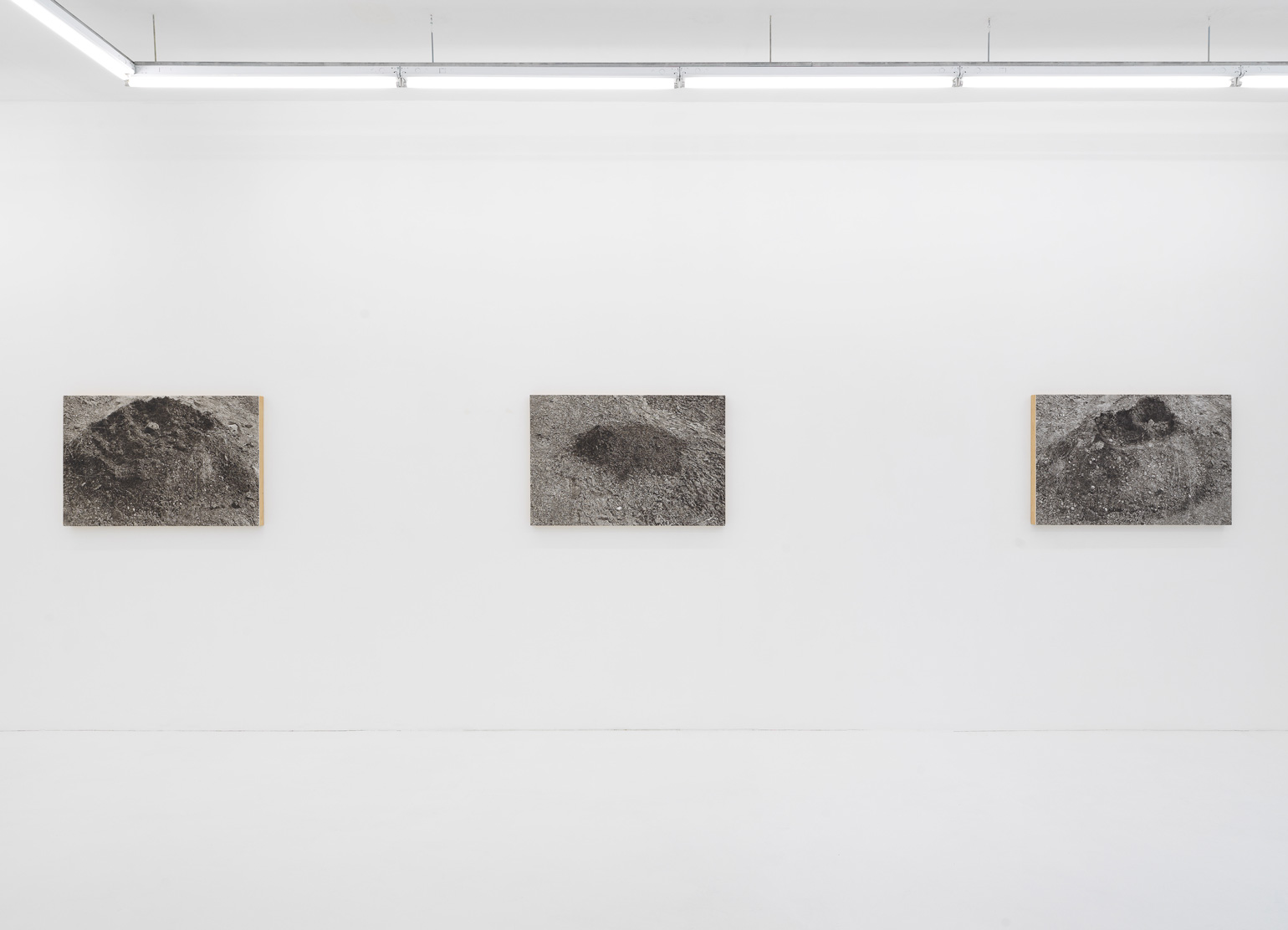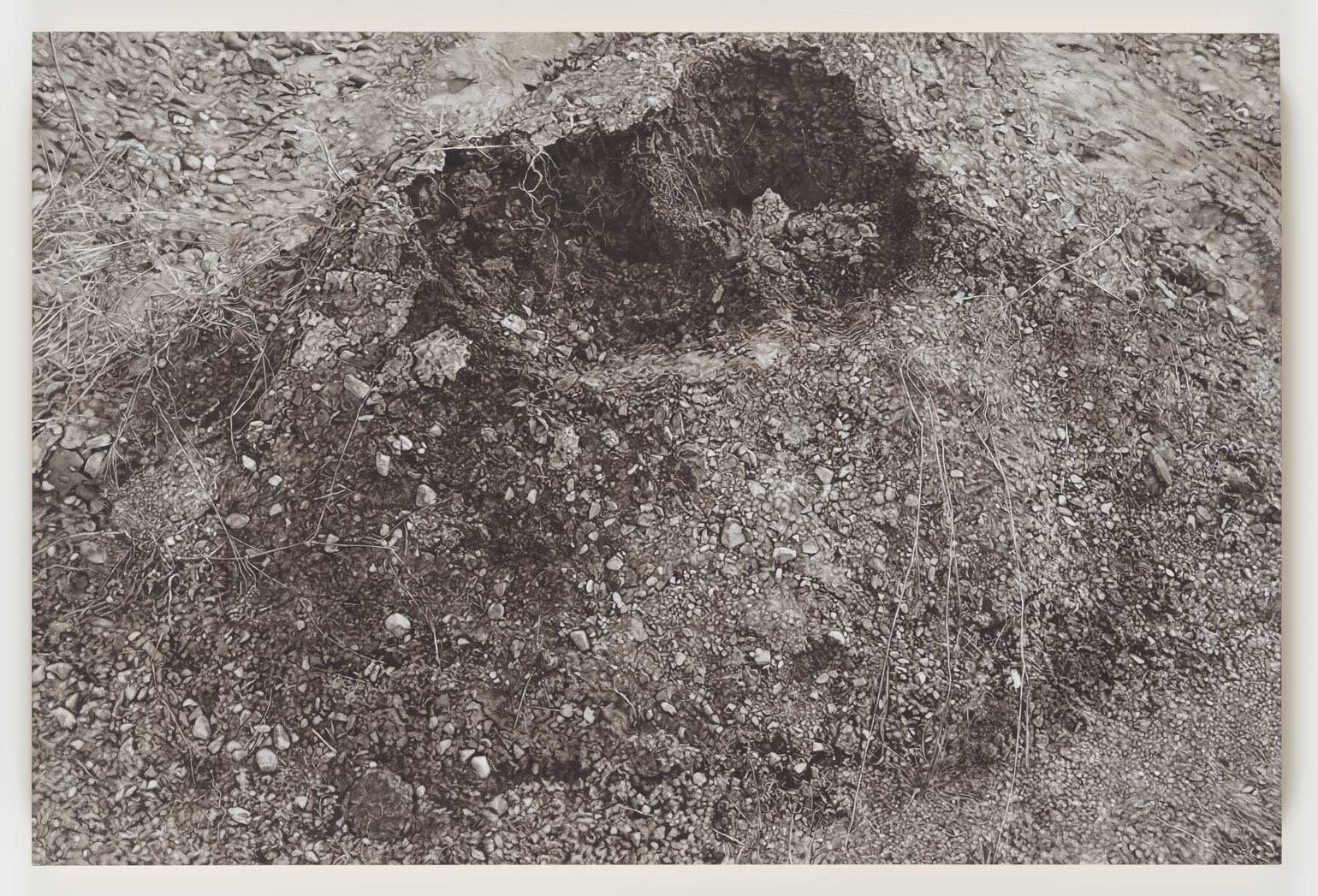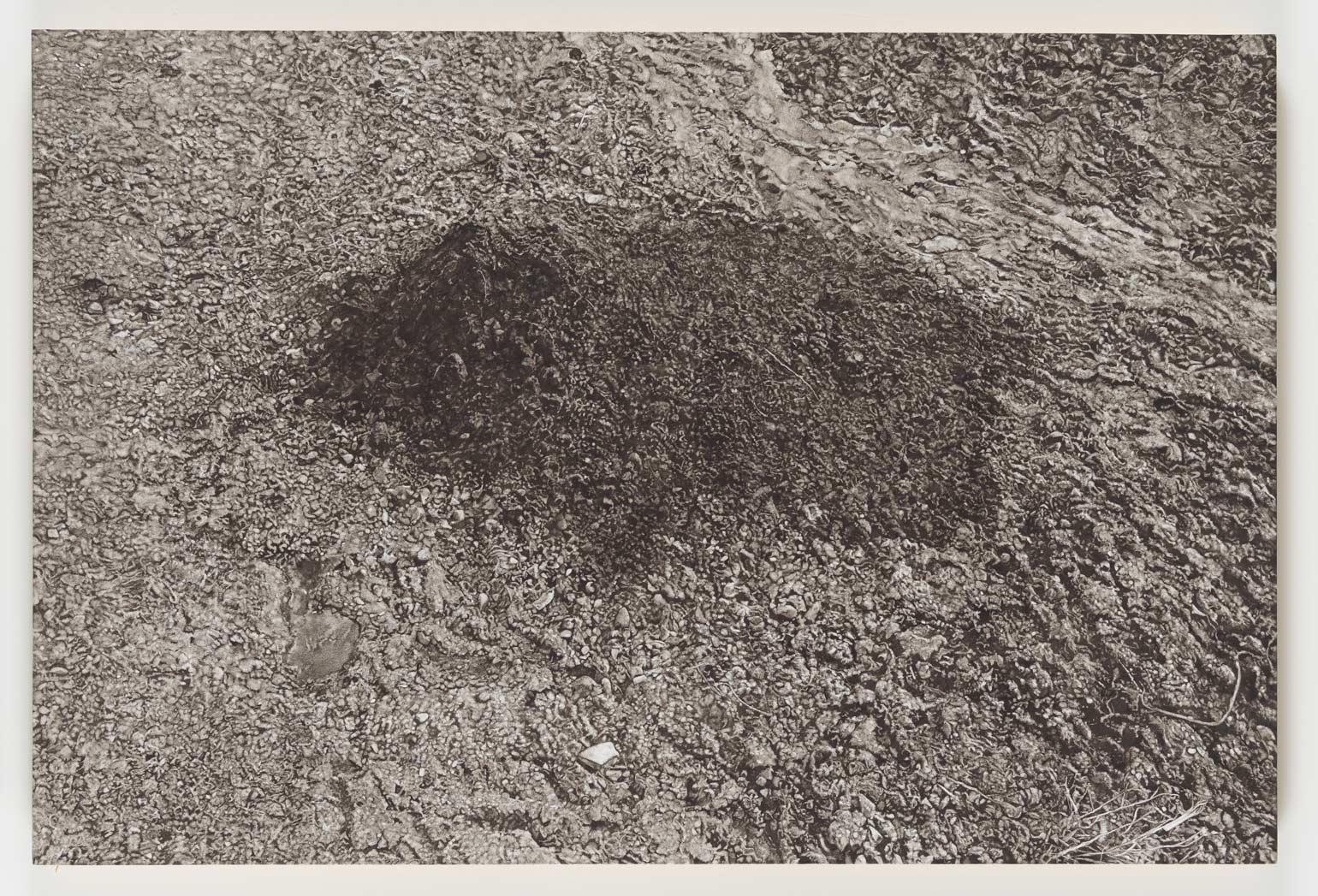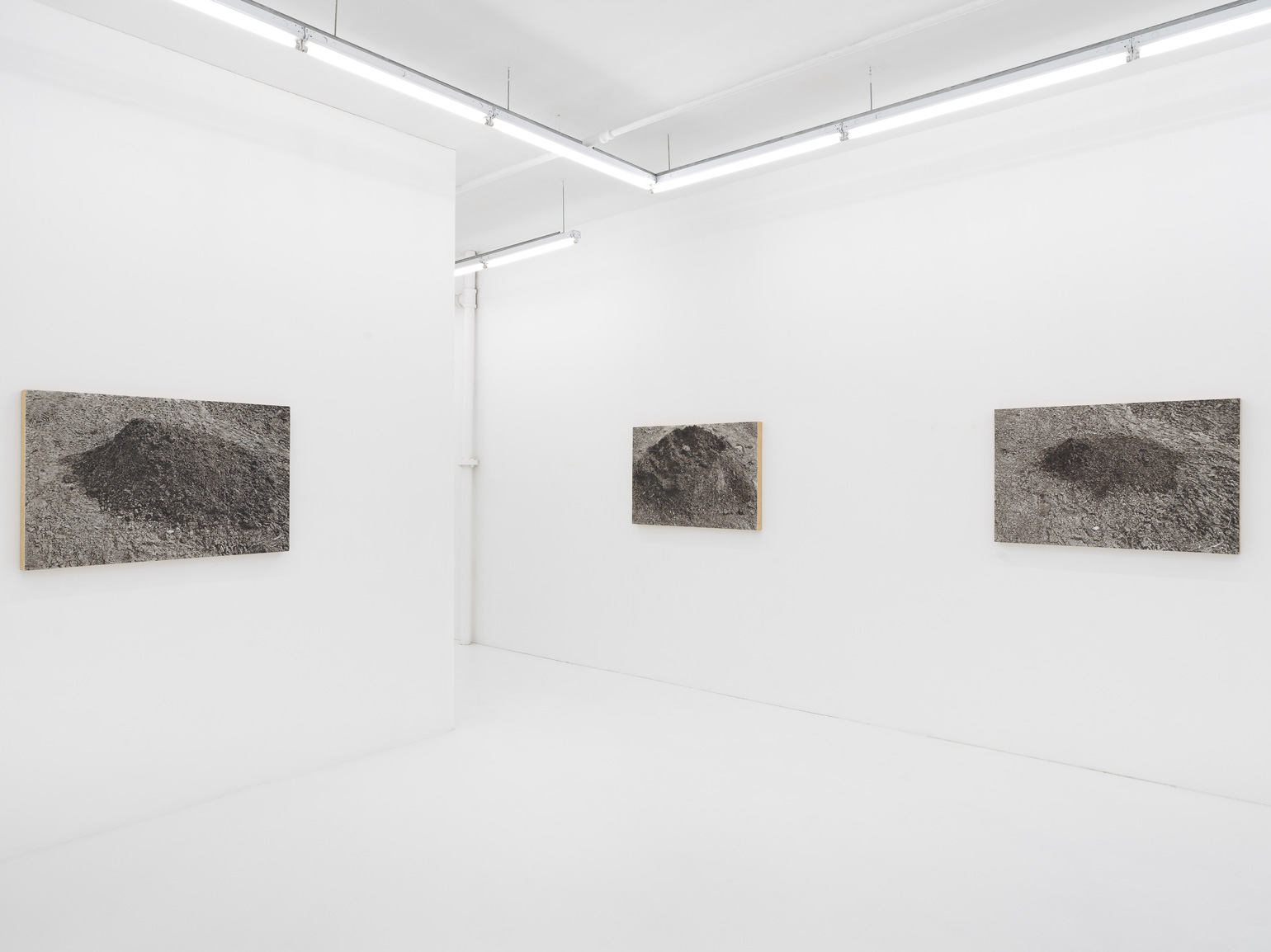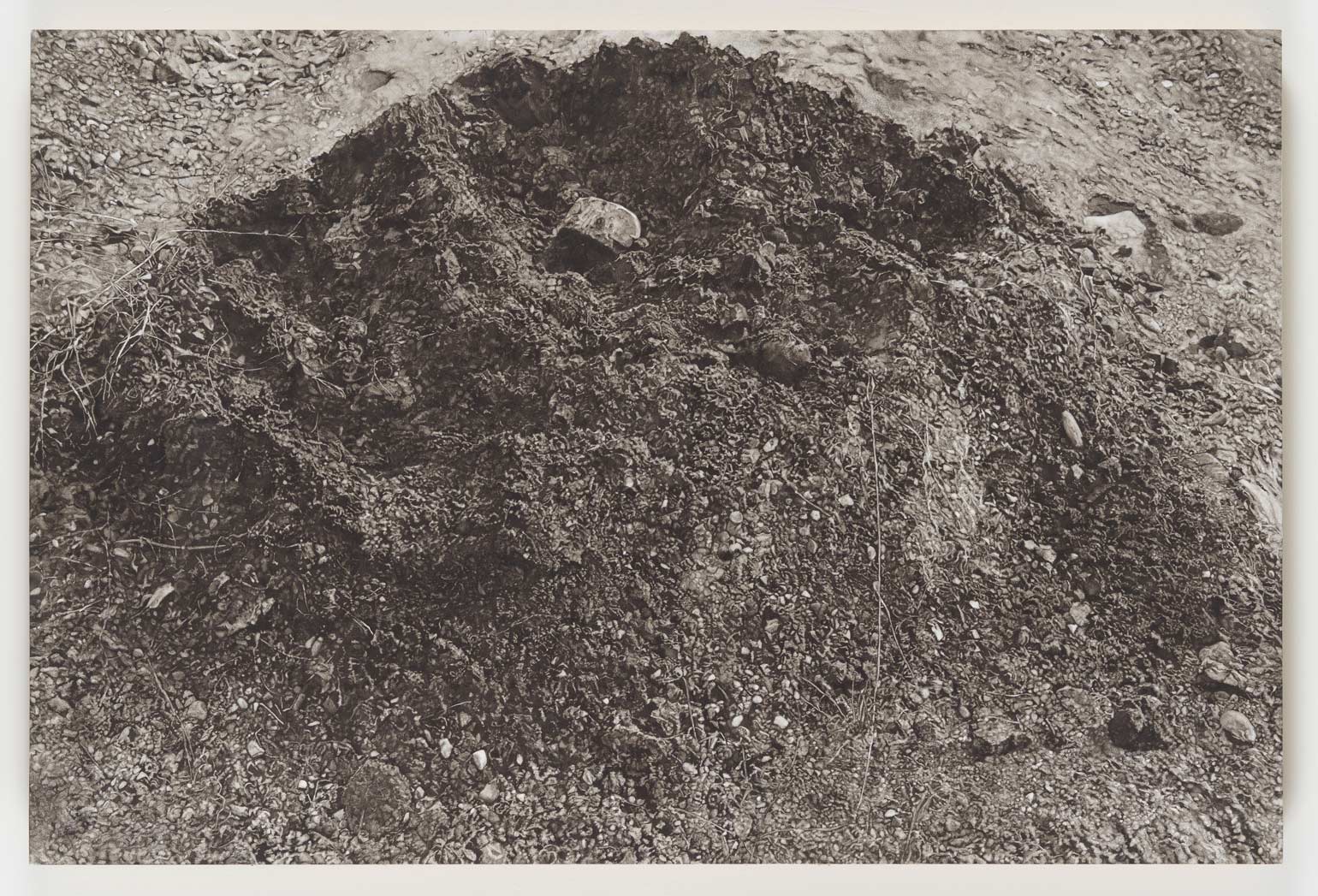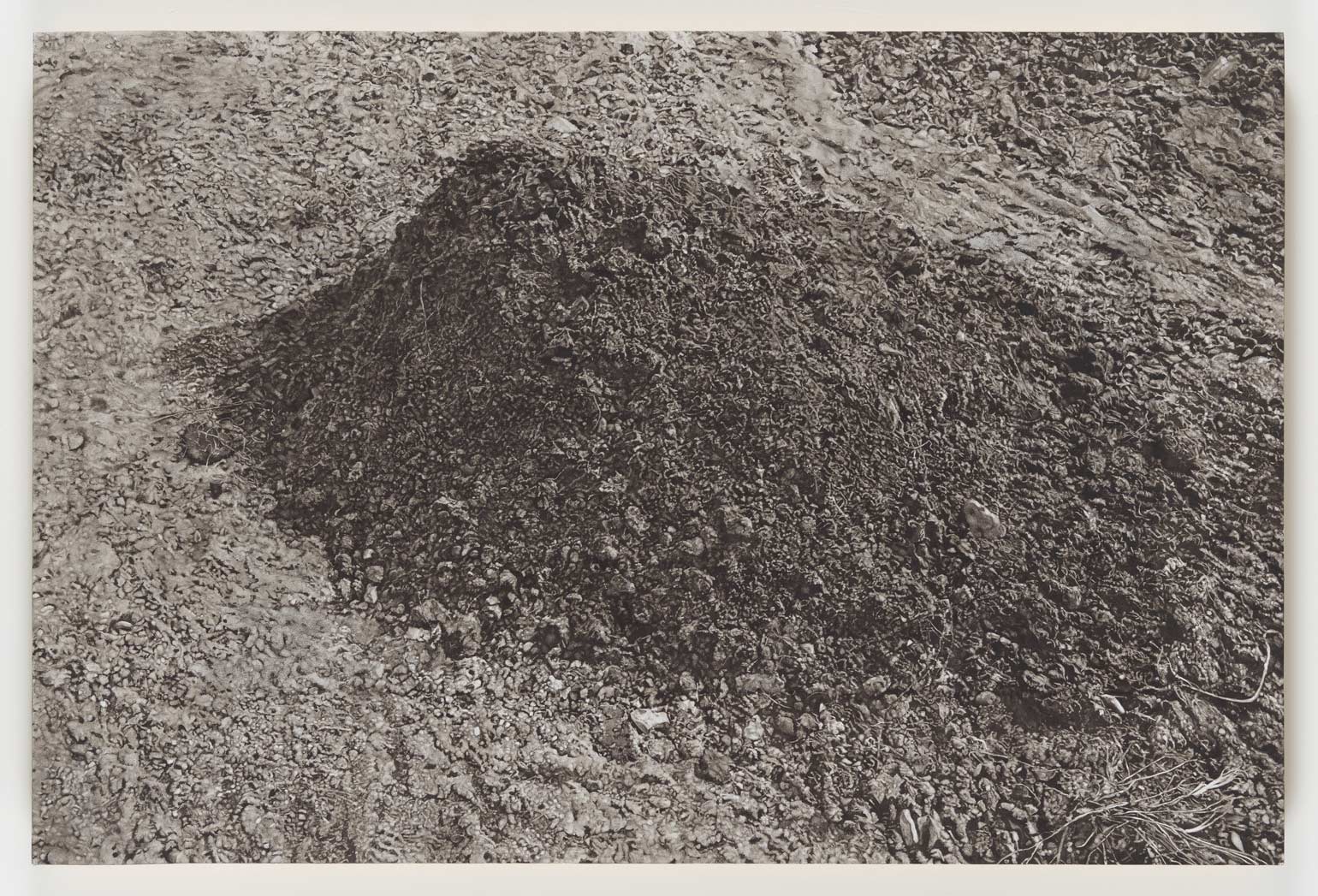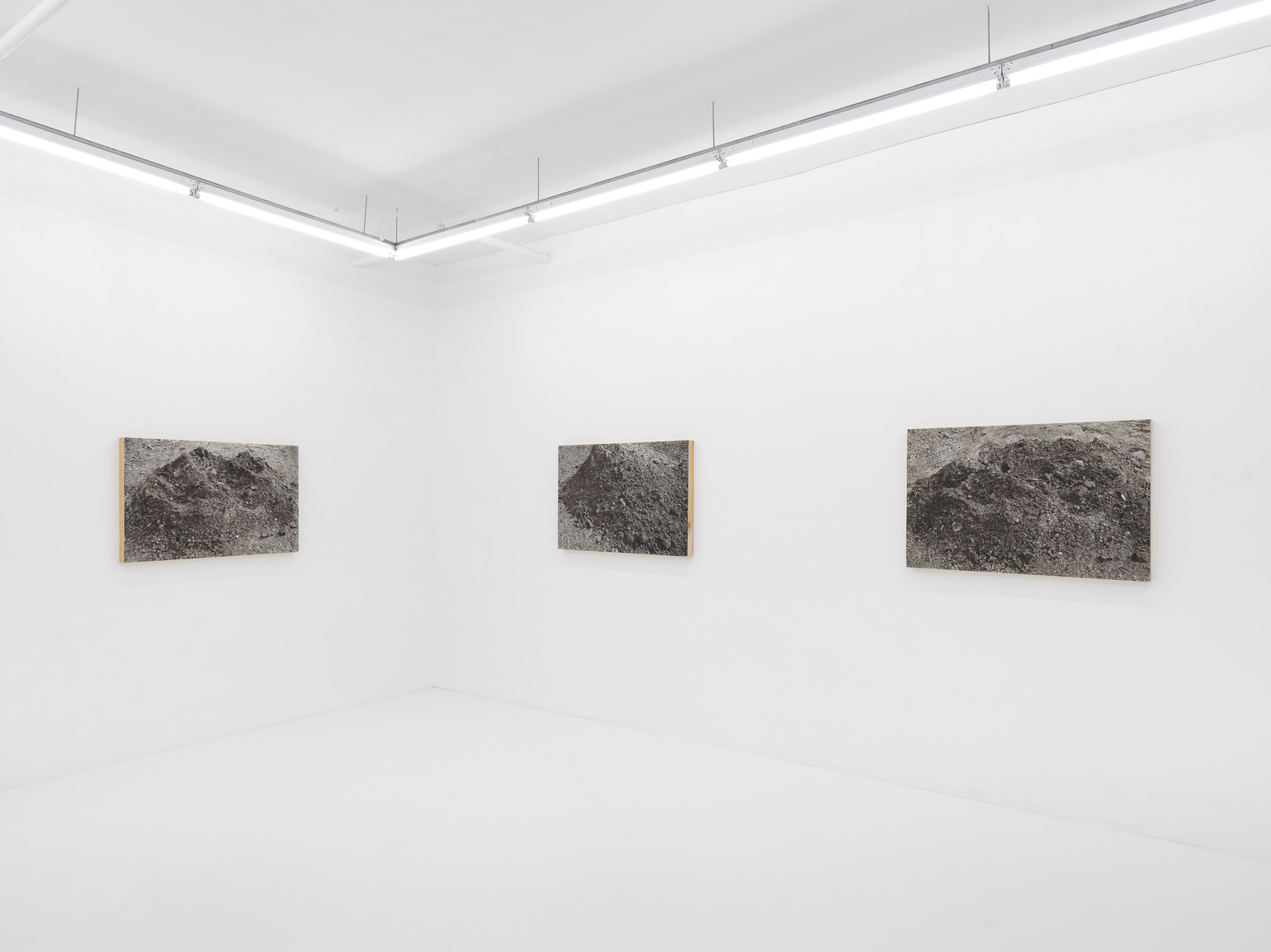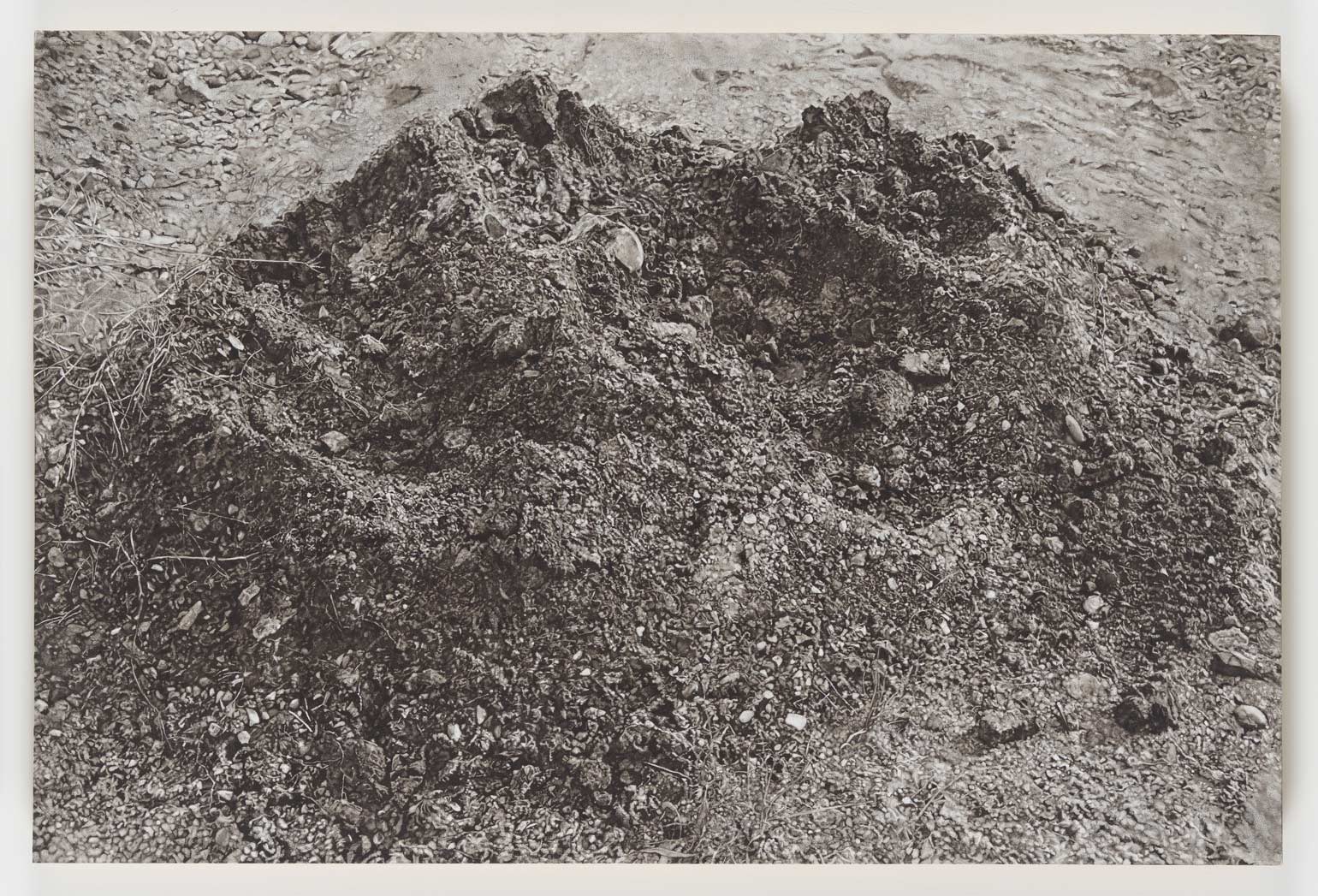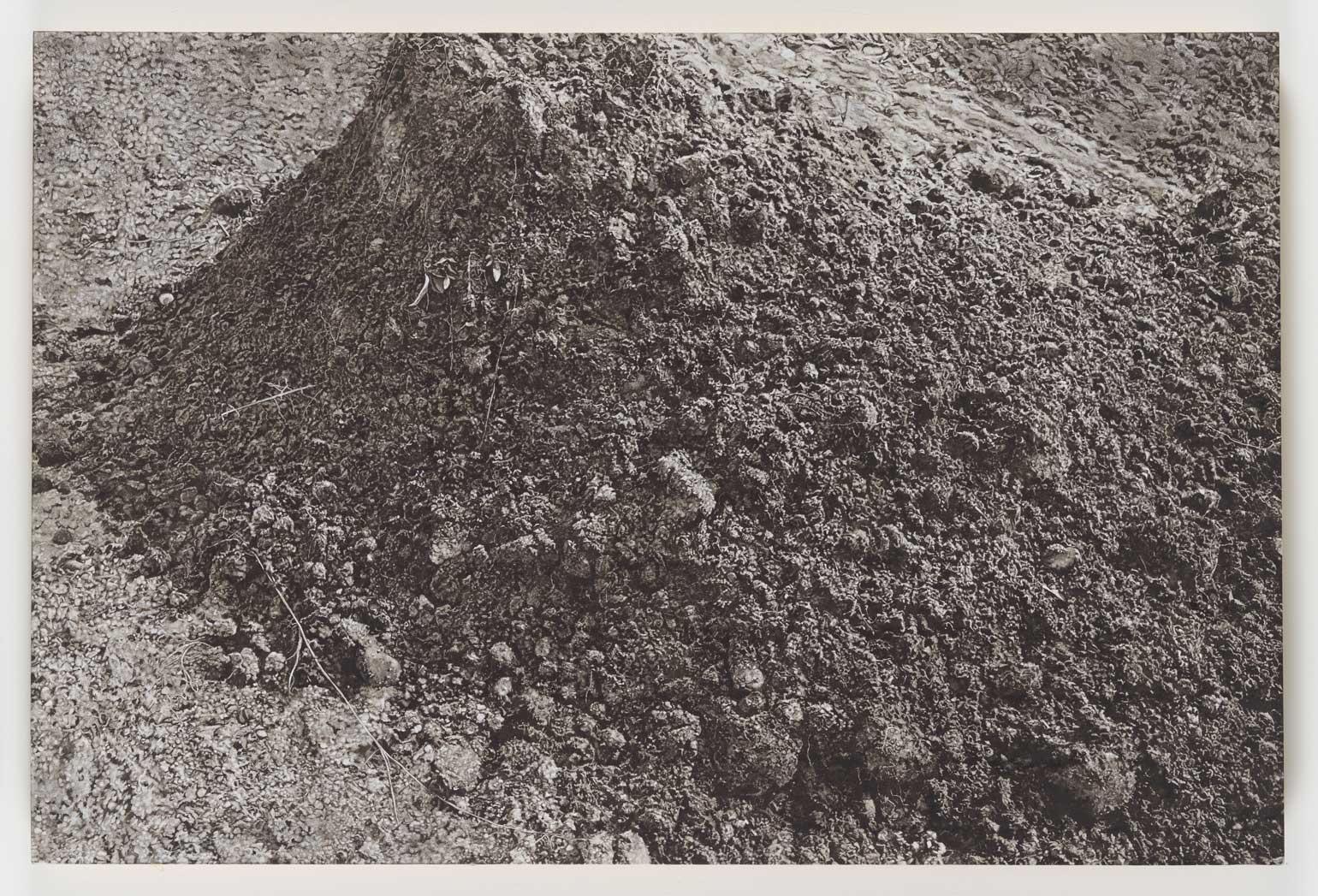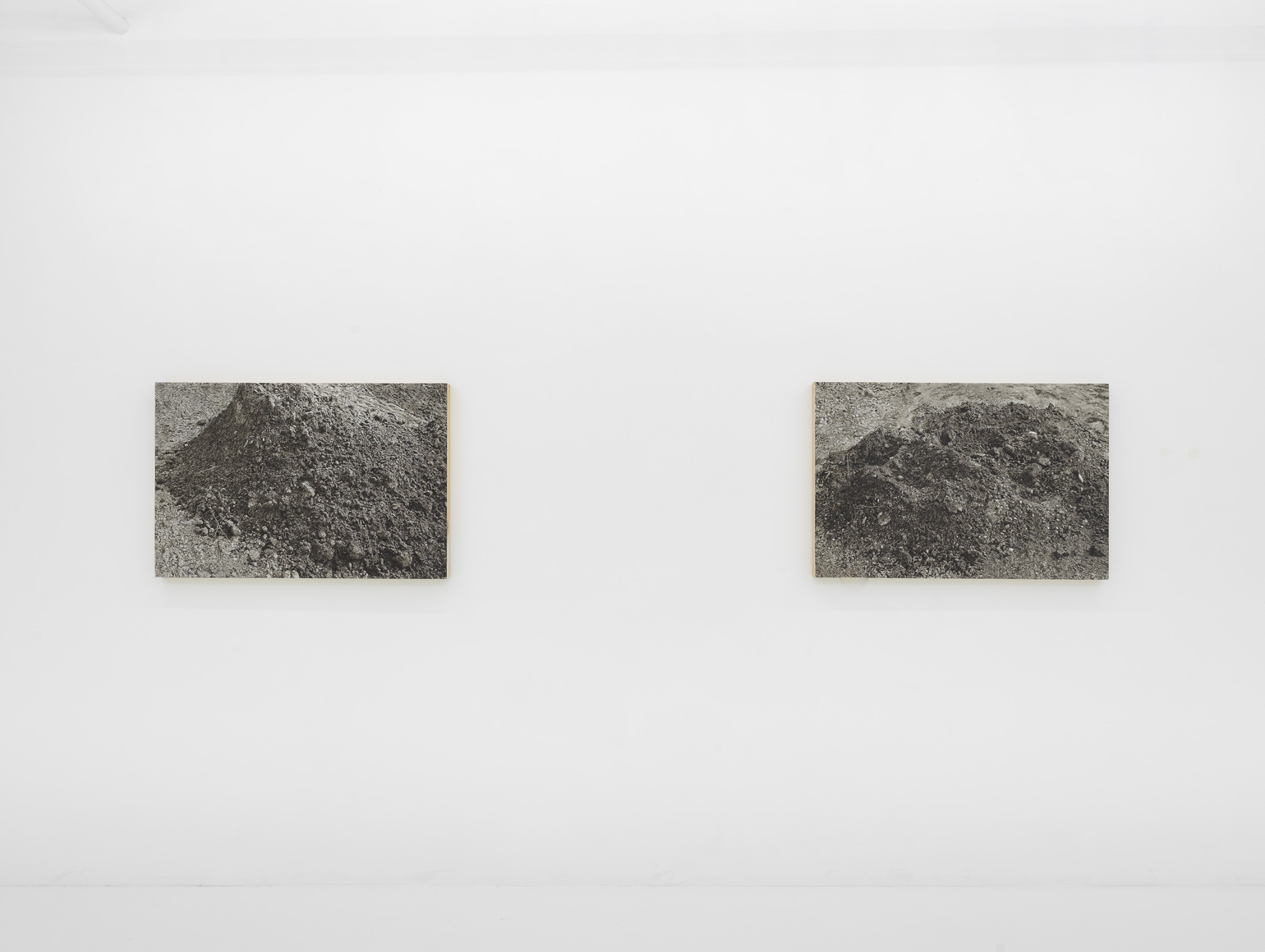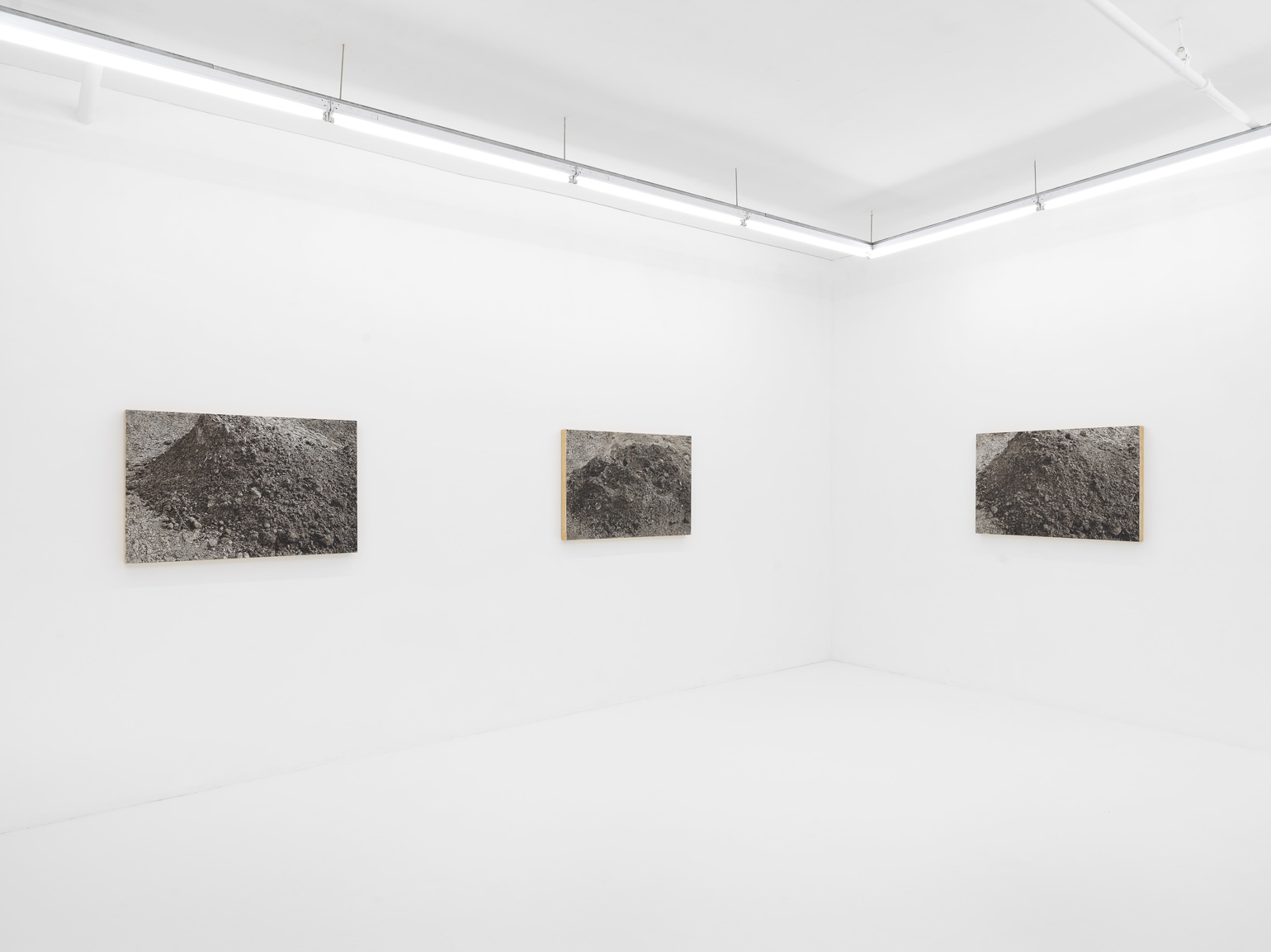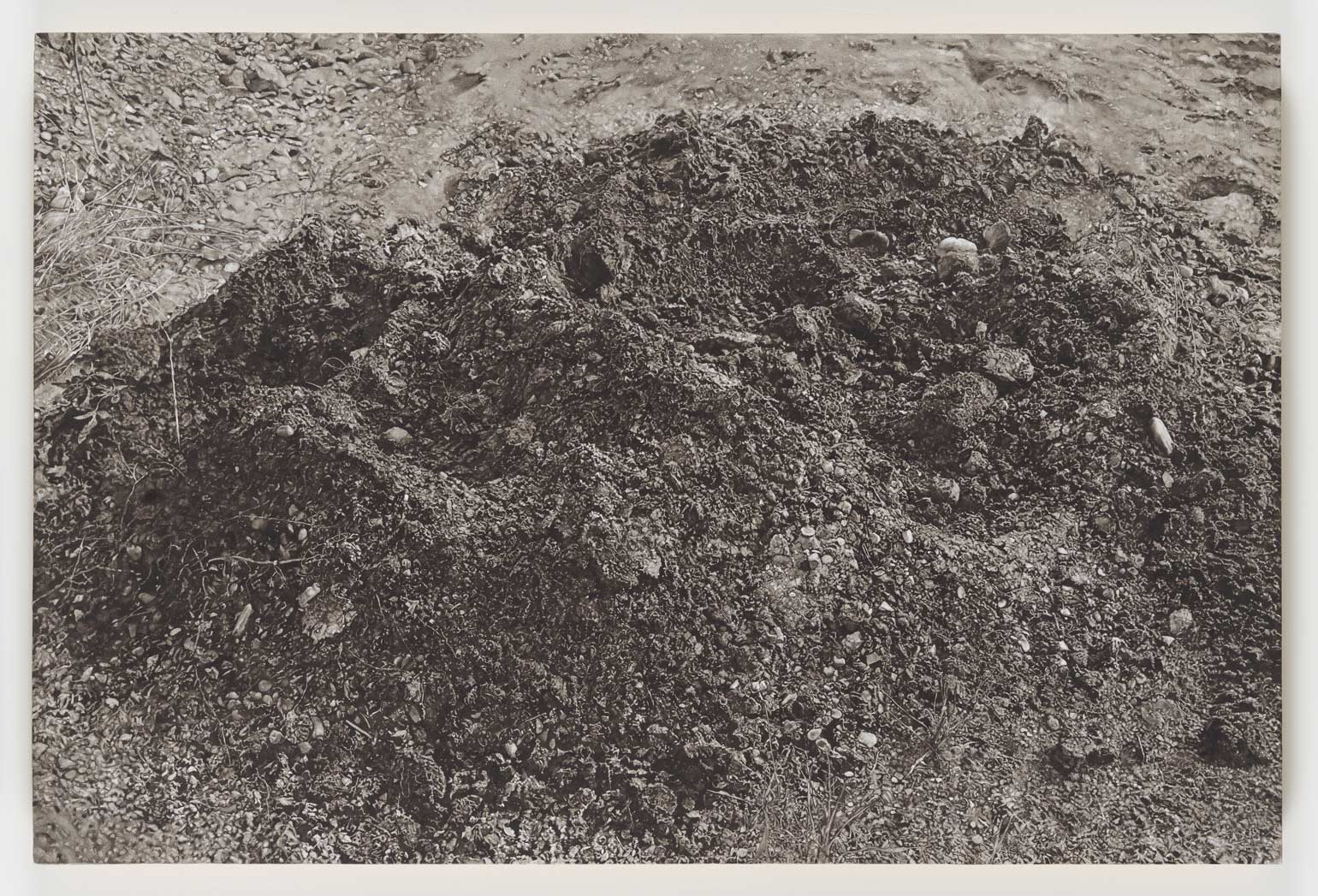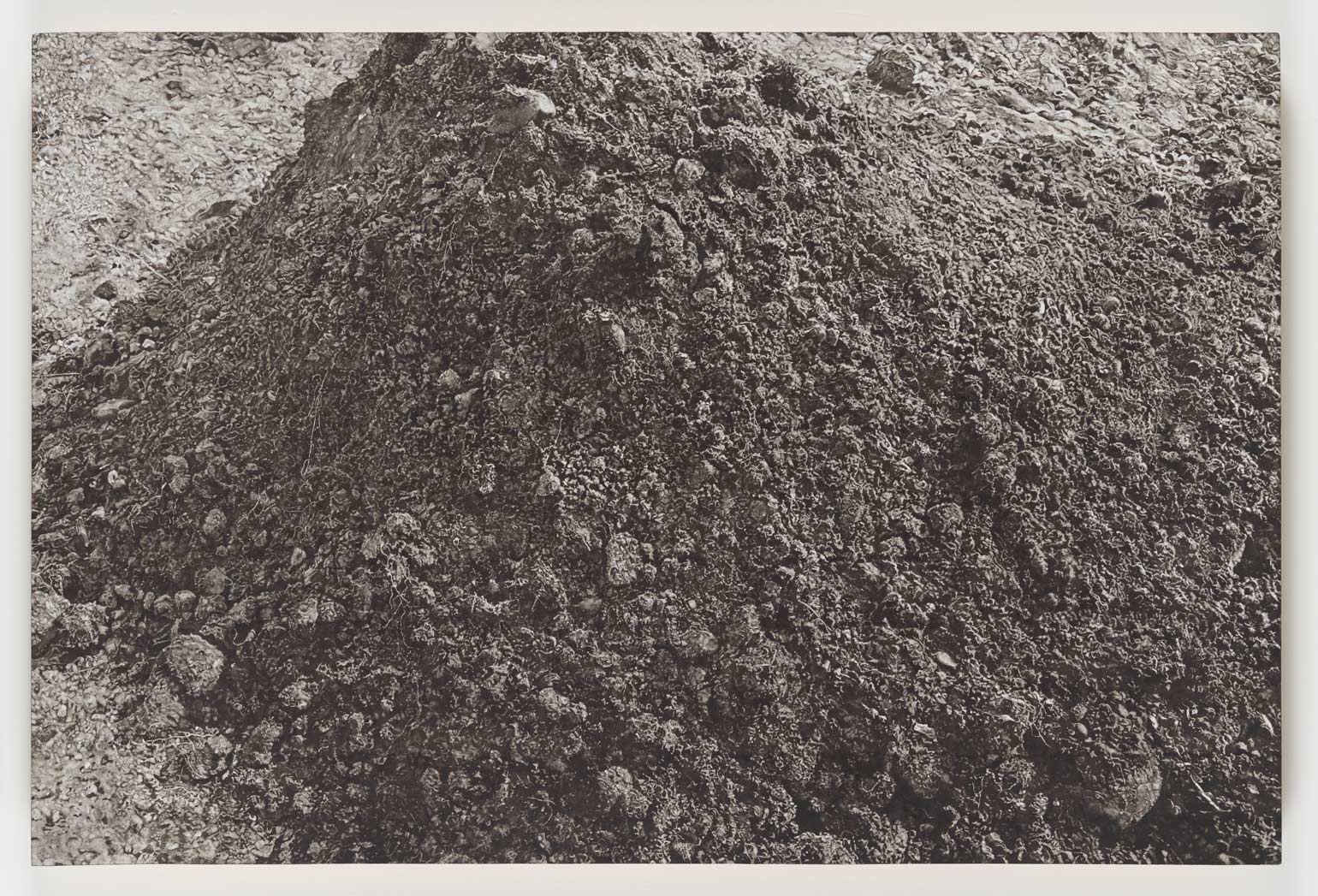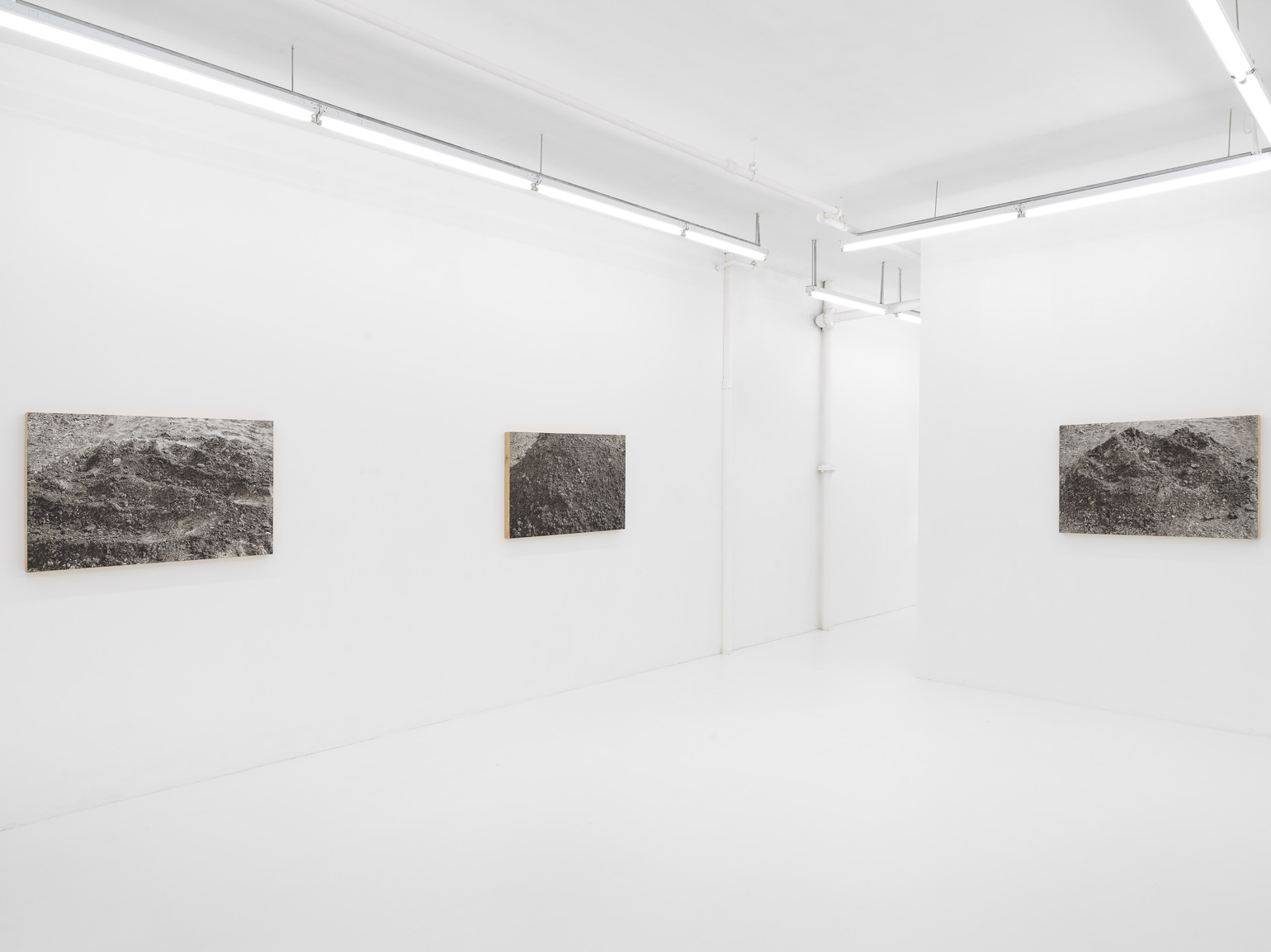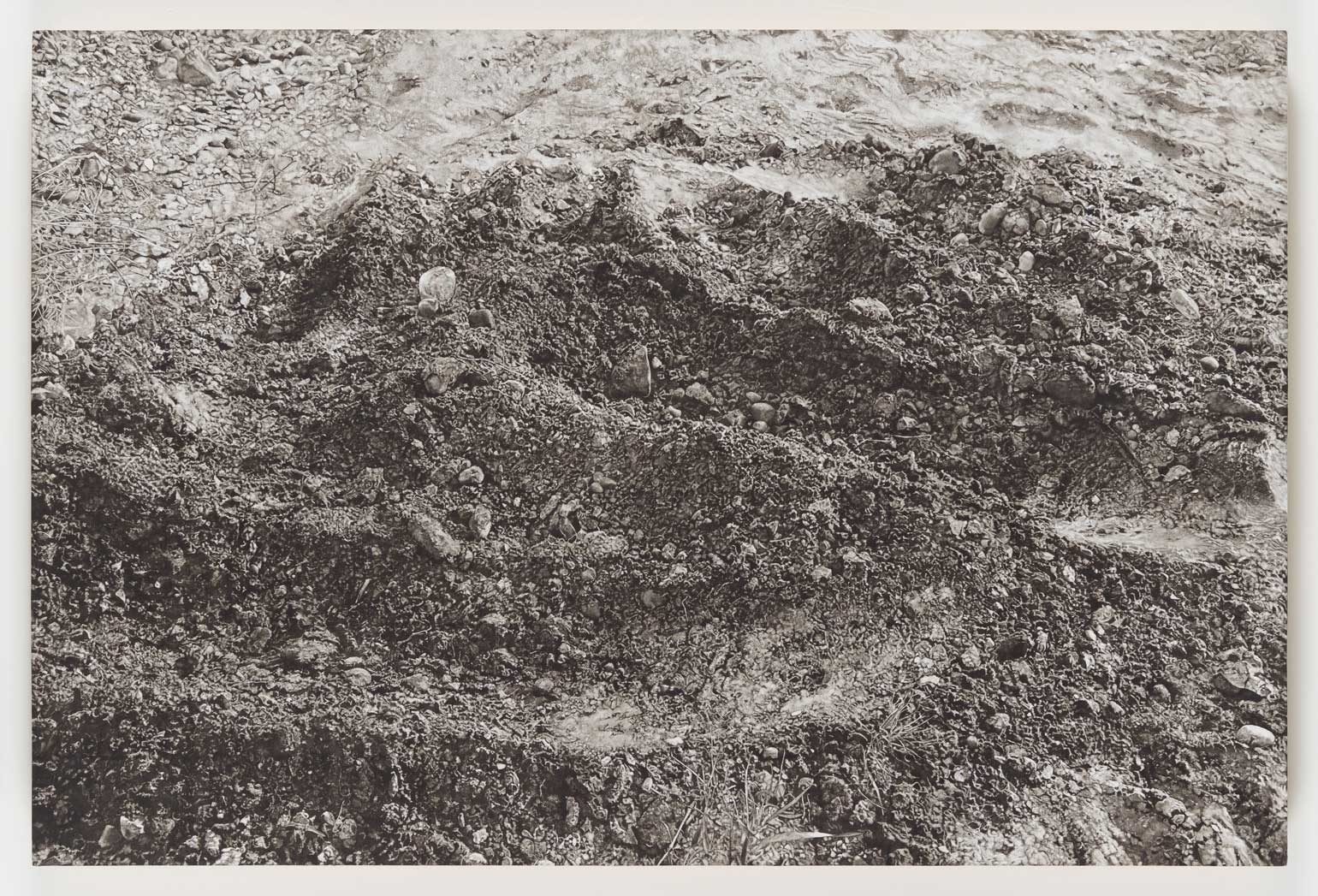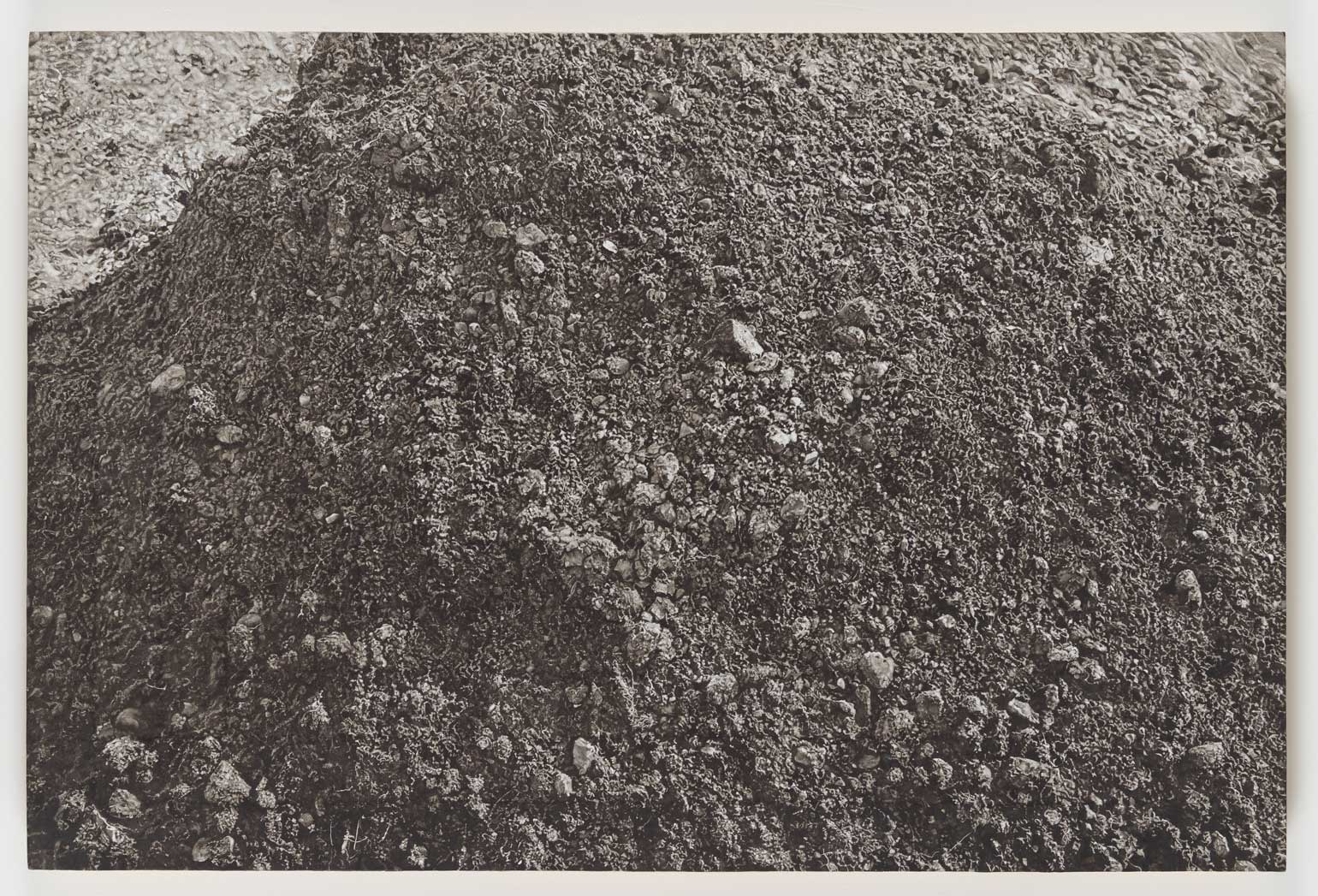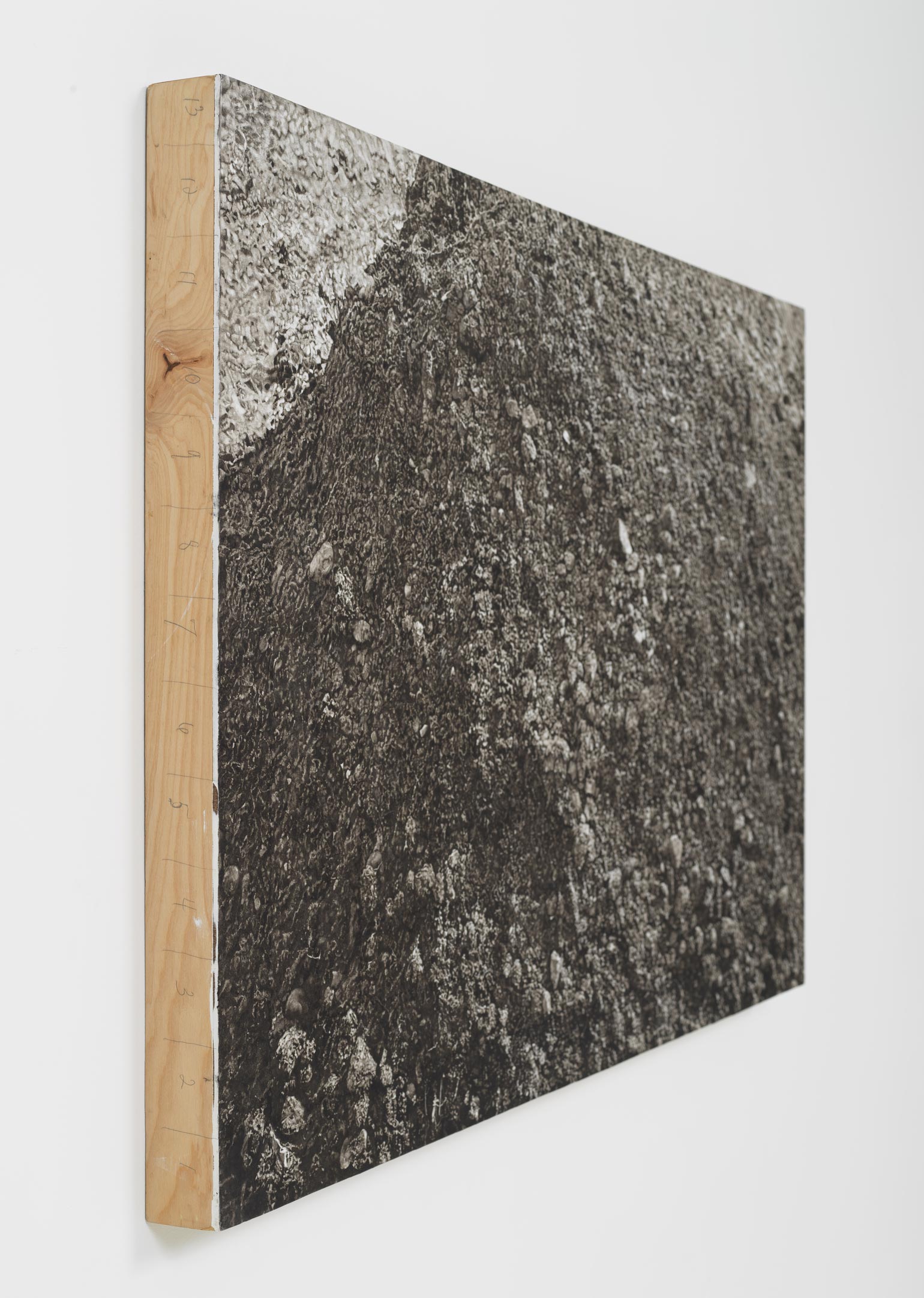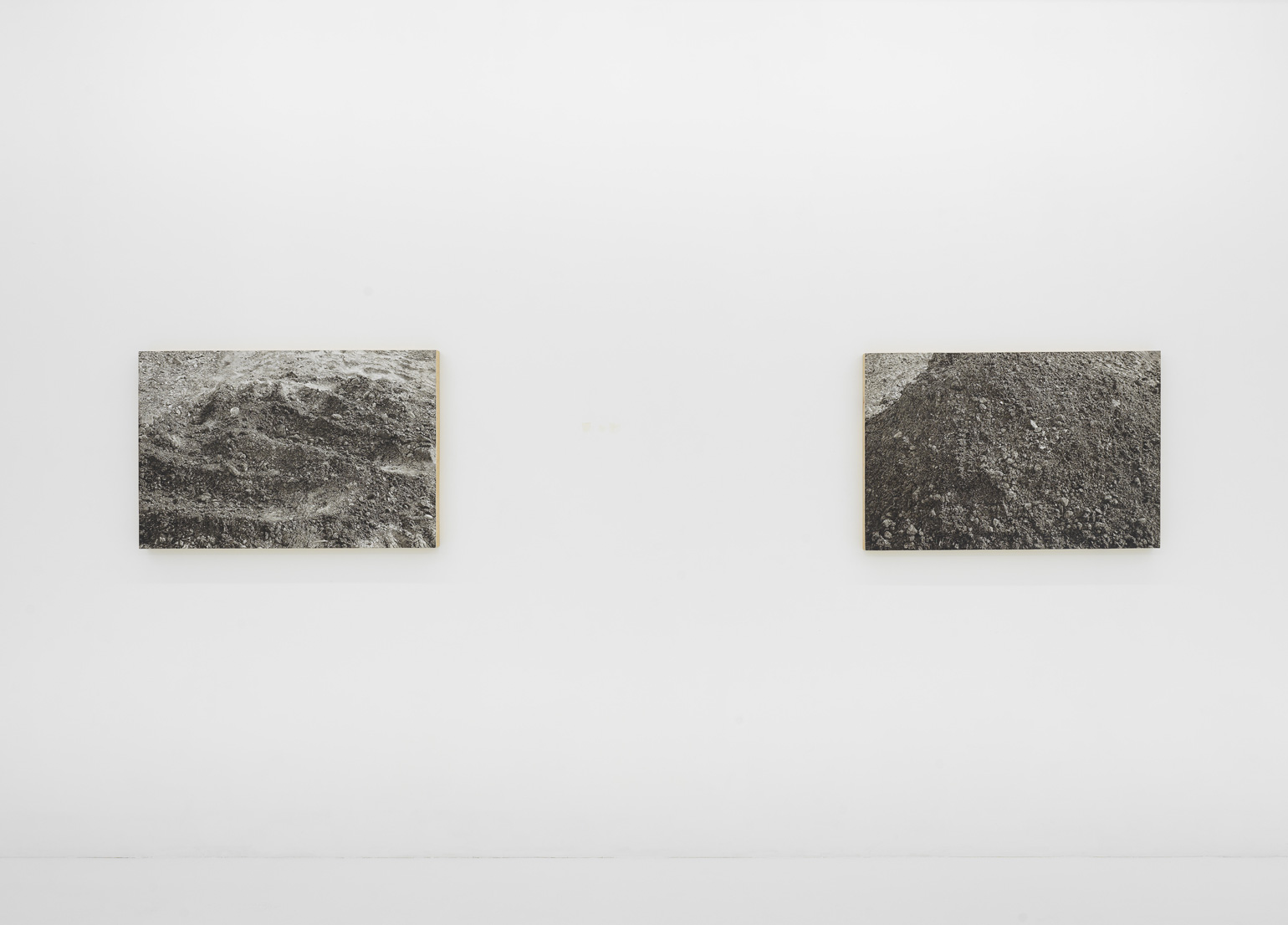For more than a half-century, Mary Mito (b. 1944, Hartford, CT; lives and works in New Mexico and New York) has rendered permeable interfaces between constructed and natural environments with a singular continuity of attention. While her rarely exhibited paintings are most often compelled by a relentless descriptive force conveying vast tracts of visual information, the terms of their format, structure, and medium are uncompromising, rule-bound, and precisely delimited. Painted over the span of six years, the ten spare, individual 28 x 42-inch oil on panel works comprising the exhibition’s titular series Sifts, restores (all works 2013-2019), draw from the artist’s 1966 activity and photographic archive of compositing a single mound of soil – terminating a closed loop between performative, photographic, and painterly operations.
While Mito’s paintings thus enfold multiple strata of physicality and concomitant appearance, her immaculate pictorial and iconographic precision, furthered by a durational relationship to process, approaches a null value of embellishment such that her work suggests a state of unalloyed stylistic anonymity. Crucially, it does so without laying claim to a position of post-historical or post-ideological fatigue. Although Mito has continually avoided alliances with movements or groups of artists, the origin and execution of her works reflects a nuanced and manifold discourse that ranges across the studied austerity of the New Topographics compositions of Lewis Baltz, the intimately scaled meditations on mark-making and photographic verisimilitude resident in the drawings of Vija Celmins, Ed Ruscha’s parodic extremes of deadpan typological recursion, self-determined rites of burial and exposure as evidence of artistic and bodily being in the work of Ana Mendieta, and the variously ontological, institutional, and phenomenological investigations of the displacements of art and resources conducted in the earthworks of Robert Smithson.
Beyond their acknowledgment of the objective terms of post-war art’s sweeping appropriative and archival turns as the visualized archaeology of a culture digging through recent pasts, Mito’s paintings query highly personal limits of both material and perceptual process throughout their thematization of the borders of visibility. Her first body of work executed on panel, Sifts, restores otherwise exemplifies her decades-held and systematic constants: Mito begins by penciling a grid matrix onto a gessoed ground, then individually hues each square into an allover monochrome field the lambent dark of Ivory Black produced by Winsor & Newton. Mapped to the physical and tactile immediacy of her subjects, the painting’s images are exhumed in a subtractive process – reconstituted from absence by means of the meticulous application of turpentine by brush, a physical and chemical process so exact as to be nearly masked of touch. She restores a series of actions – tellingly, already comprised of material accretion, dispersal, and displacement of landscape – once inventoried as photographic copy to a state of emphatic if seemingly seamless objecthood achieved with the inverse of the anticipated temporal, visual, and physical characteristics associated with darkroom development.
In so much as ‘sifting’ connotes the often unseen, gendered, and domestic labor of filtering, measuring, riddling, and screening, the paintings are also ‘about’ the varying degrees of representation that accrue around a direct experience variously expunged and reconstructed through extreme personal commitments to rigorous technique and nonaesthetic artistic decisions. An inquiry into the nature and cumulative comprehension of difference, her practice proves expressively non-expressive in as much as there can be no perfect copy. Mito may minimize evidence of her hand in the capture of downward-canted views of miniscule, epidermal cracks and the chance displacements of loam and pigment, yet the eroded and undecidable perimeters between somatic intervention and unauthored geologic presence recall that human action is at once the focus of the series and out of the picture.
